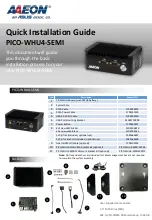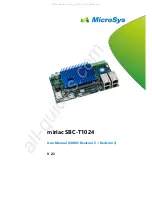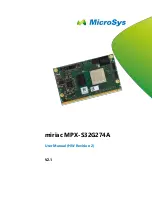
COMe-mEL10 - User Guide Rev. 1.1
// 40
3.11.
SDIO (option)
The SDIO features is supported from the processor. To find out more about SDIO, contact Kontron Support.
3.12.
Serial Peripheral Interface (SPI)
The Serial Peripheral Interface (SPI) bus is a synchronous serial data link where devices communicate in master/slave
mode, where the master device initiates the data frame. Multiple slave devices are allowed with individual slave select
(chip select) lines.
The SPI interface may only be used with a SPI Flash device to boot from the external BIOS on
the carrier board.
General purpose SPI connected to COMe instead of boot SPI requires a hardware
modification in the form of additional resistors. Implemented on request only.
3.12.1.
SPI Boot
The SPI Flash chip stores the BIOS to be booted. The COMe-mEL10 supports SPI boot from the 32 MByte SPI Flash chip
on the module and an external 32 MByte SPI Flash chip on a carrier board. The pins A34 (BIOS_DIS0#) and pin B88
(BIOS_DIS1#) select the SPI Flash boot source, see Table 16: SPI Boot Pin Configuration.
The SPI flash chip on the carrier is required to be 32MByte (256MBit).
Table 16: SPI Boot Pin Configuration
BIOS_DIS0#
BIOS_DIS1#
Boot Bus
Function
Open
Open
SPI
Boot on-module SPI
Open
GND
SPI
Boot carrier board SPI
The BIOS cannot be split between two chips. Booting takes place either from the on-module
SPI Flash chip or the external SPI Flash chip on the carrier board.
Table 17: Supported SPI Boot Flash Types for 8-WSOIC Package
Size
Manufacturer
Part Number
Device ID
32MB
Winbond
W25Q256JV
EFh / 40h / 19h
32MB
Macronix
MX25L25645GZ2I
C2h / 20h / 19h
32MB
Micron
MT25QL256ABA1EW9-0SIT
20h / BAh / 19h
32MB
Cypress
S25FL256LAGNFI010
01h / 60h / 19h
















































